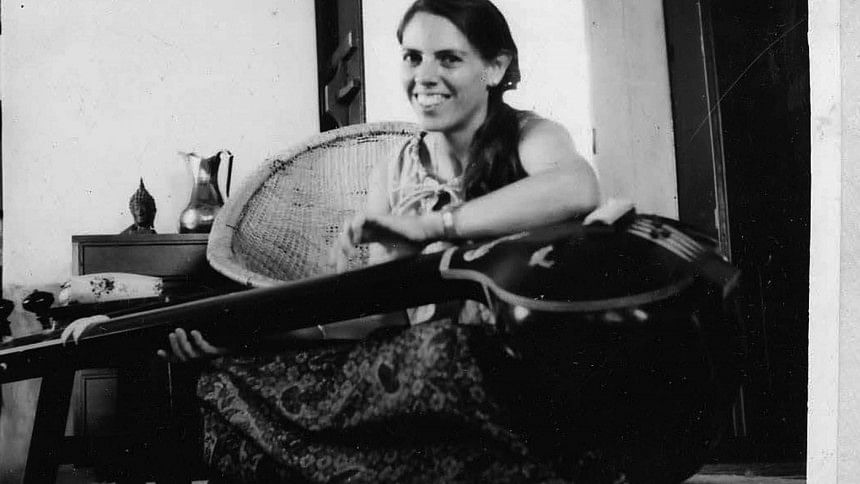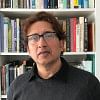Tribute to a true admirer of Bangladesh

Mary Frances Dunham (MFD) arrived in Dhaka on a wintry day in November of 1960. From the window of her room at Hotel Shahbagh, she found ample opportunities to observe the city. This is how she described her first impression: "As much of the town as I have been able to see so far is most charming. Very pictorial. I think we are in the garden district and I have not explored far enough to find the squalor that is supposed to exist abundantly, but as far as the business district is from here and as far as the university in the other direction there are meadows, fine modern buildings, wide avenues lined with tall green trees, small cows and goats grazing everywhere. The land is very flat, and from the hotel we can see far in all directions, but it looks like mostly trees and meadows."
That first impression was the beginning of an enduring relationship with Bangladesh: a country she took great interest in, studied extensively, and wrote about. MFD came to East Pakistan with her husband, architect Daniel Dunham, who was hired by Louis Berger and Consulting Engineers, a US-based consultancy firm that specialised in infrastructure building all over the world. Daniel served as the head of Berger's Dhaka office's architecture division before joining the Department of Architecture at the East Pakistan University of Engineering and Technology a few years later. Daniel was one of the designers of Kamalapur Railway Station, an icon of "tropical modernism" in South Asia.
Upon arrival in Dhaka, MFD thought her first task in this unfamiliar country was to learn the language of the land. While staying at Hotel Shahbagh—in walking distance from Dhaka University—she was fortunate to have found a great teacher, who inspired her interest in the Bangla language. A scholar of medieval Bangla literature, Prof Ahmed Sharif introduced her to several Bangla classics, including a few by Tagore. This interest would eventually lead her to learn Bangla with the devotion of an ethnolinguist and develop a focused research interest in Muslim jarigan (the term jari comes from the Persian word "zari," meaning lamentation) with the prodding of renowned poet Jasimuddin.
More than three decades later, in 1997, she transformed her Master's thesis at Columbia University into a book titled "Jarigan: Muslim Epic Songs of Bangladesh." It was the exploration of a genre of Bangla folkloric music that mourns the tragic events in the battle of Karbala near the Euphrates River in 680 CE. Two years later, she worked with renowned litterateur Ahmed Sofa to translate his "Tales of Flowers, Trees, and Birds" into English. Earlier in 1971, her effort to raise awareness of the East Pakistan genocide in the US Congress reflected her deep commitment to the people of Bangladesh and their right to self-rule.
While in Dhaka, she was never afraid to venture beyond the perceived safety circle for expats, shunning the typical orientalising tendencies of Westerners. She refused to settle into the comfortable life of a "foreigner" in Dhaka's prestigious residential neighbourhood called Dhanmondi, which one of her friends called a "hopeless suburbia." Instead, she and her husband walked around Ramna and found a "quaint" house—Hafiz Villa—on Siddheswari Road that became their little Bangladesh for over seven years. Even though their house felt like "an untidy ruin swarming with women, babies, and tattered animals," it is from there that MFD unleashed her fierce discovery of Bangladesh.
When I first met her and her husband in the architecture building at the Bangladesh University of Engineering and Technology in 1992, they were on a trip to Bangladesh. As a newly hired lecturer in the Department of Architecture, I was fascinated by their story of work, travel, and cultural encounters. I gave them a tour of the building, discussed Dhaka's evolution, and their time in pre-independence Bangladesh. Afterwards, they invited me to have dinner with them at the posh Sonargaon Hotel. Our animated conversation continued over a sumptuous meal. But I must confess: little did I understand then the extraordinary power of MFD, a diminutive woman with a towering zest for life and its extraordinary range of possibilities.
It was decades later, in 2017, when I met her architect-planner daughter, Katherine, in Chattogram, where she taught briefly at the Asian University for Women, that I reconnected with MFD. I had visited her and Katherine in their Upper East Side Manhattan flat, and I was overwhelmed to see MFD's vast collection of Bangla books and memorabilia. With artefacts ranging from rickshaw art to rare Bangla books to musical instruments of East Bengal, the apartment was no less than a museum!
Alas, by then, she had already been suffering from Parkinson's disease for over a decade and had become very fragile. Yet, a conversation about Bangladesh would brighten up her face. When I would say a few sentences in Bangla, she would nod and reminisce about her days in Bangladesh both in English and Bangla. At times it seemed as though she was a dual citizen of the US and Bangladesh!
Mary Frances Dunham passed away on Monday, October 11. When Katherine texted me Monday night that her mother had breathed her last, I missed both her and my own mother, who died after contracting Covid-19 last year. While my mother was laid to rest in our family graveyard on a melancholic rainy day, MFD's final destination was a tad startling.
In many ways, MFD was a force of nature. She was committed to a humanist view of the world, empathy for the downtrodden, and belief in the sustainability of a carbon-neutral world (she was an impassioned advocate of the bicycle as a carbon-free mode of transportation). She was born in 1932 in New Jersey, US, and spent her childhood years in France, becoming fluent in French. She graduated from Radcliffe College in Massachusetts in 1954, and four years later, obtained a Master's degree in education from Harvard.
She was no second fiddle to her architect husband during her stay in Bangladesh. She was proactive in the patronage of local culture with the spirit of an enlightened native. Instrumental in establishing the first Alliance Française in Dhaka during the 1960s, she brought her love of languages to Bangladesh. She taught Bangla to foreign doctors from the Cholera Lab (later icddr,b), so that they could communicate directly with their patients and undertake surveys in rural Bangladesh. This was who MFD naturally was—no pretension, no pursuit of fame. All this emanated from her profound sense of service to society.
Even in death, she didn't abandon that sense of serving humanity. She had instructed Katherine to donate her body to medical research on Parkinson's disease. There will be a public bench in her honour in Manhattan's Riverside Park on 111 St. This way, her name will be a part of the city's public realm. MFD once wrote that she had never forgotten the lyrics of a Tagore song: Ontor momo bikashito koro, Ontorotor he, Nirmol koro, Ujwal koro, Shundor koro he … (O' innermost one, help flourish my soul, make it pure, make it bright, and make it beautiful …).
MFD, you will be missed. Rest in peace.
Adnan Zillur Morshed is an architect, architectural historian, and educator.

 For all latest news, follow The Daily Star's Google News channel.
For all latest news, follow The Daily Star's Google News channel. 



Comments